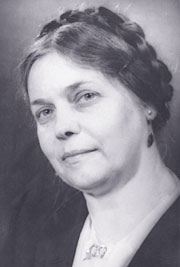Olga Petrovna Khodataeva
Filed under: People, Animation Designer, Animator, Director, Visual Artist, Writer, Color, Educational films, Propaganda, Russia, Soyuzmultfilm, World War 2 ( WW2 ),
 Full Name:
Full Name:Olga Petrovna Khodataeva
Occupation / Title:Animation Designer, Animator, Director, Visual Artist, Writer
Date of birth:26/02/1894
Date of death:10/04/1968
Birthplace:Konstantinovskaya, Russian Empire
Associated studios:Mazhrabpom-Rus
Sovkino
Soiuzkino
Mosfilm
Soyuzmultfilm
Biography
Olga Khodataeva was a Soviet animator, animation director, and pioneer of the Soviet animation industry. She was amongst the first wave of Soviet women animators. From 1927 to 1960, she directed around 30 films that often involved Soviet propaganda and resourceful female characters. She is the younger sister of animation director and writer Nikolai Khodataeva.
Family and early life
Khodataeva was born on February 26, 1894, in the Cossack village of Konstantinovskaya in the Russian Empire. As one of three children to a tsarist civil service official, Khodataeva grew up educated and surrounded by the arts. Khodateva is the younger sister of Nikolai Khodataev, a well-known early Soviet animation director and writer. The family moved to Moscow in 1898.
Khodataeva never married or had children.
Career outline
Khodataeva began her animation career in 1924 when her brother Nikolai invited her to participate in the formation of the State Technical School for Cinema (GTK), the first experimental Soviet animation studio. The studio used art to inspire revolutionary action through a low-budget program that produced animated films.
However, women in GTK often did not receive the recognition they deserved. In GTK’s first film, Interplanetary Revolution (1924), Khodataeva was not recognized for her animation work on the project until ten years later when Nikolai mentioned her participation in an article.
Following her involvement in GTK, Khodataeva, Nikolai, and the Brumberg sisters formed their own animation collective in 1927. Khodataeva was part of the collective from 1927 to 1932 and, in her early years, often co-directed films with Nikolai and Valentina Brumberg.
By 1928, Khodataeva began directing her own films and set up her own animation collective in 1930. However, by the mid-1930s, the environment in the Soviet Union was changing into a new socialist realism that took creative control away from filmmakers. Nikolai left the industry, but Khodataeva adapted to produce more politically charged content in a Disney realism style that would define her more well-known work. In these years, Khodataeva began working with Soiuzmultfilm (formed in 1936), which brought Soviet animators together to change the dynamics of animated film production.
Khodataeva’s 1937 animated short with Soiuzmultfilm, Father Forest and the Grey Wolf, helped reestablish the Father Forest image and the tradition of New Year’s films in the Soviet Union.
In the 1940s, Khodataeva spent the early years dedicated to the war effort. However, she remained active in the animation industry despite the curtailing of productivity and creativity. Much of Khodataeva’s work lacked the same political fierceness and championing of women’s rights as in her early work. However, Khodataeva helped create Soviet female subjectivity within Soviet animation.
Khodataeva retired in 1960 following the release of the Golden Little Feather, a Disney-styled fairytale co-directed by Leonid Aristov.
Personal style
Throughout Khodataeva’s early work, she mainly used paper and ink cut-outs with an avant-garde style inspired by newspaper political cartoons. In her Father Frost animations, she uses a multiplane setup to create a sense of depth in the chase scenes.
Khodataeva’s early films also had a pro-women, feminist manifesto style, like in Terrible Vavila and Aunt Arina (1928). The films dealt directly with women’s issues to encourage rural women to become involved in Soviet politics and take advantage of their equal status.
Khodataeva’s work is known for using anthropomorphism, Disney-style realism, fairytale storylines in a contemporary setting, and resourceful female characters. While many of Khodataeva’s female characters held more traditional roles, she emphasized their bravery.
Khodataeva was described as wearing homemade robes with shell necklaces. Her animation collective was known as a “special country” because of her films’ exotic and adventurous style and studio operations.
Honors and awards
The Flame Burns won:
Filmography
[Show/Hide]
References:
Bendazzi, Giannalberto. Animation: A World History: Volume I: Foundations – the Golden Age. Vol. 1, Focal Press, 2015.
Leigh, Michele, and Lora Mjolsness. She Animates: Soviet Female Subjectivity in Russian Animation. Academic Studies Press, 2020.
